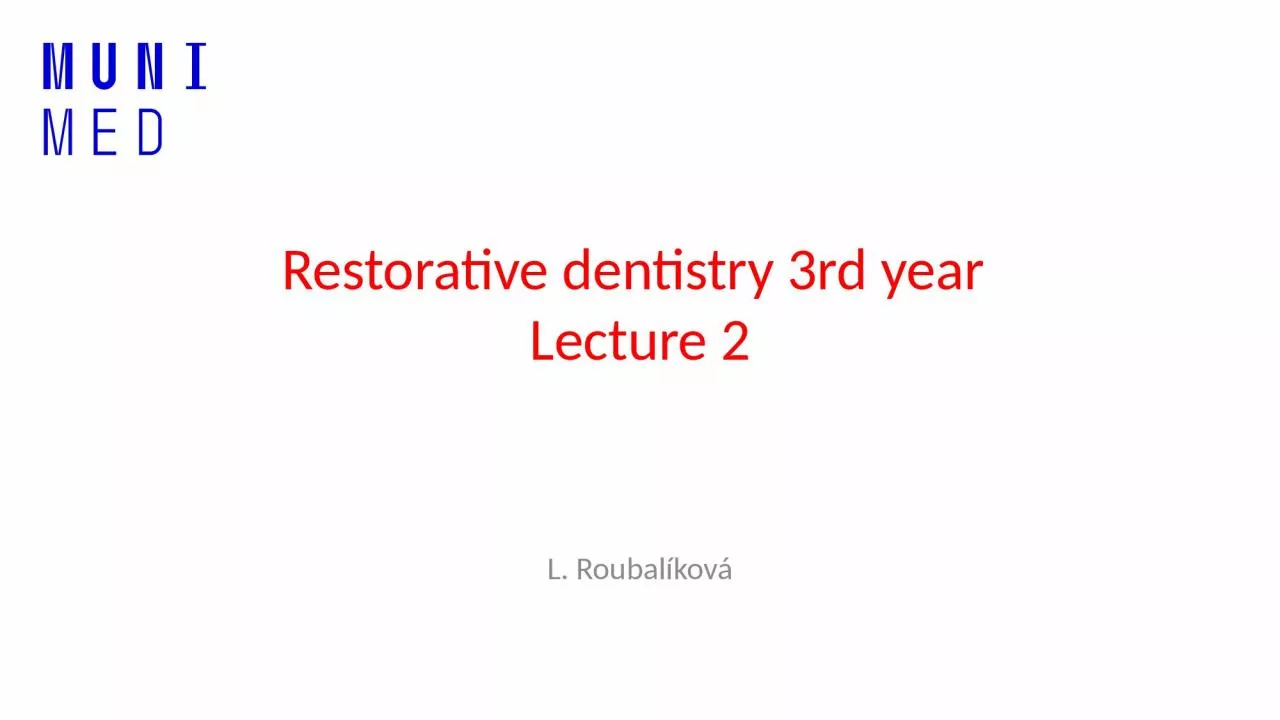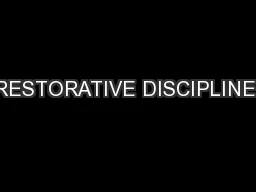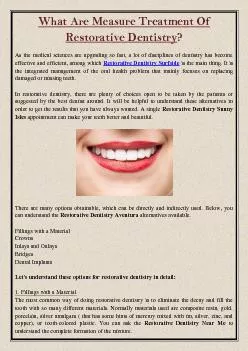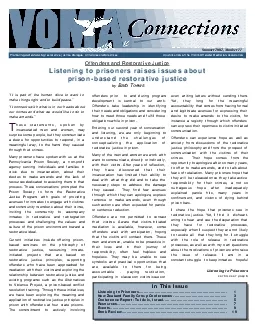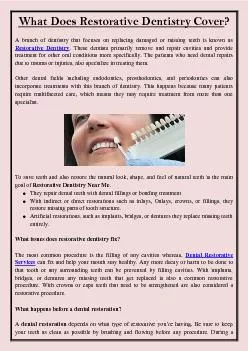PPT-Restorative dentistry 3rd
Author : KittyCat | Published Date : 2022-08-02
year Lecture 2 L Roubalíková Composite materials Chemically bonded mixture of organic matrix and inorganic fille r s Coupling agent binds organic matrix
Presentation Embed Code
Download Presentation
Download Presentation The PPT/PDF document "Restorative dentistry 3rd" is the property of its rightful owner. Permission is granted to download and print the materials on this website for personal, non-commercial use only, and to display it on your personal computer provided you do not modify the materials and that you retain all copyright notices contained in the materials. By downloading content from our website, you accept the terms of this agreement.
Restorative dentistry 3rd: Transcript
Download Rules Of Document
"Restorative dentistry 3rd"The content belongs to its owner. You may download and print it for personal use, without modification, and keep all copyright notices. By downloading, you agree to these terms.
Related Documents

